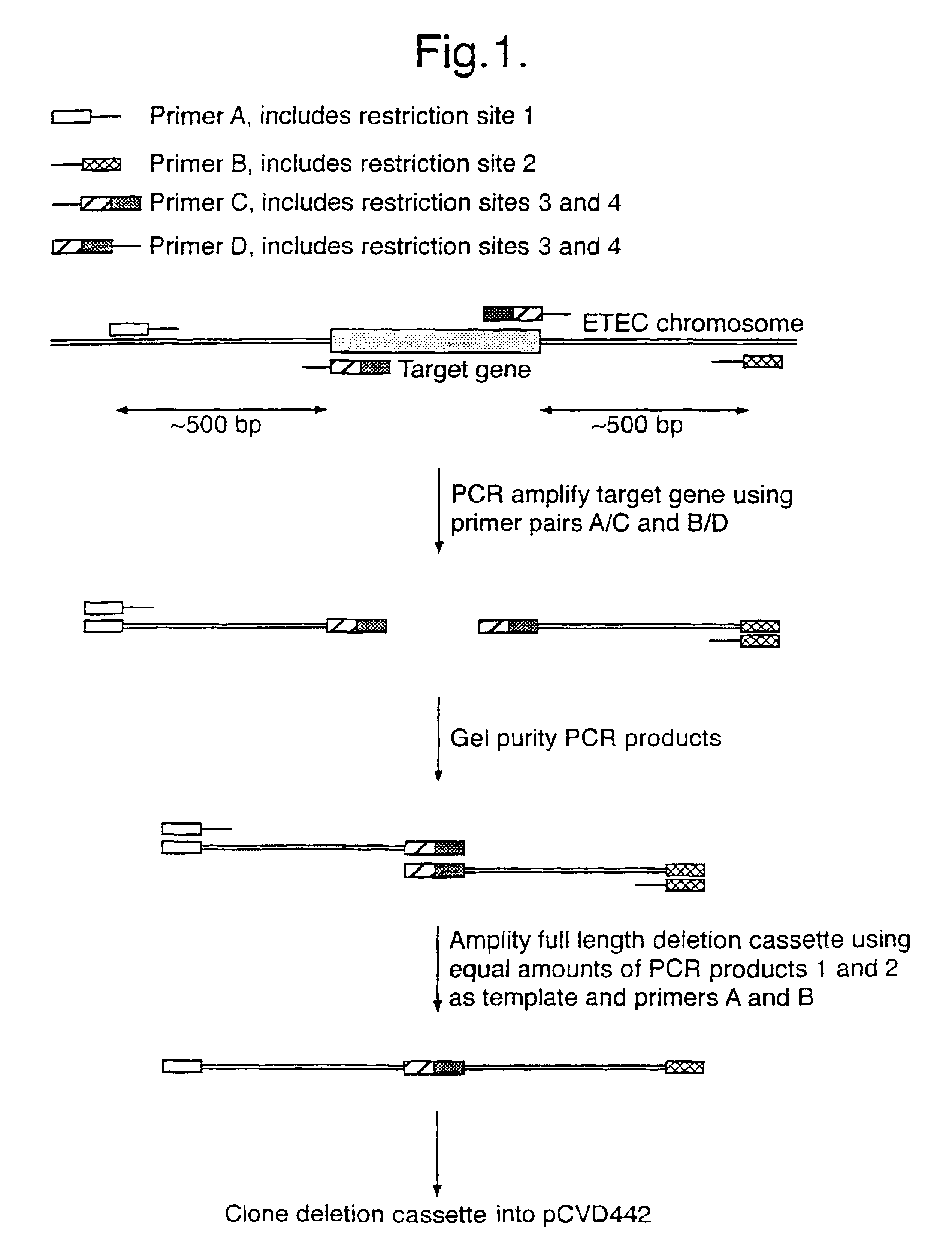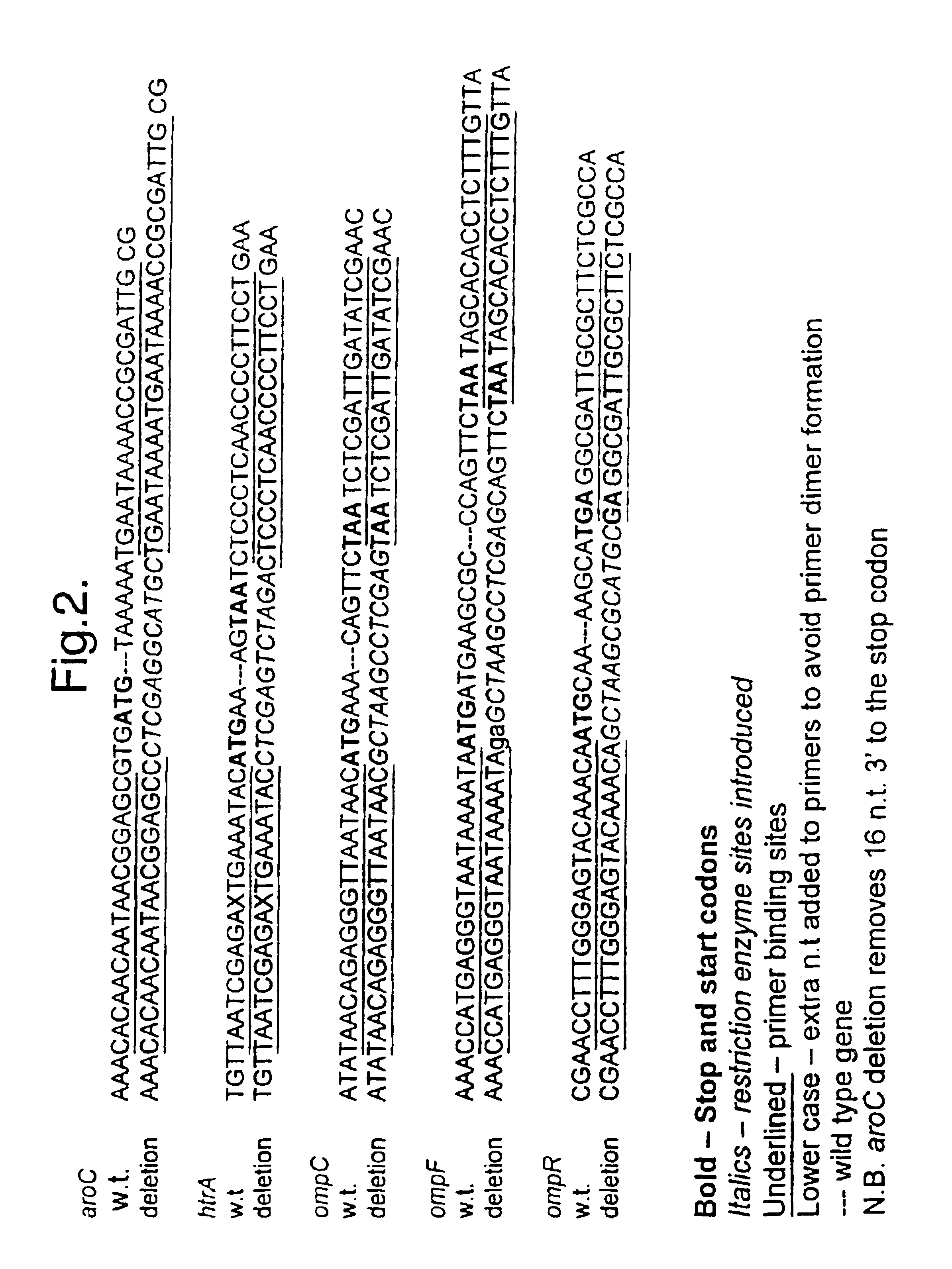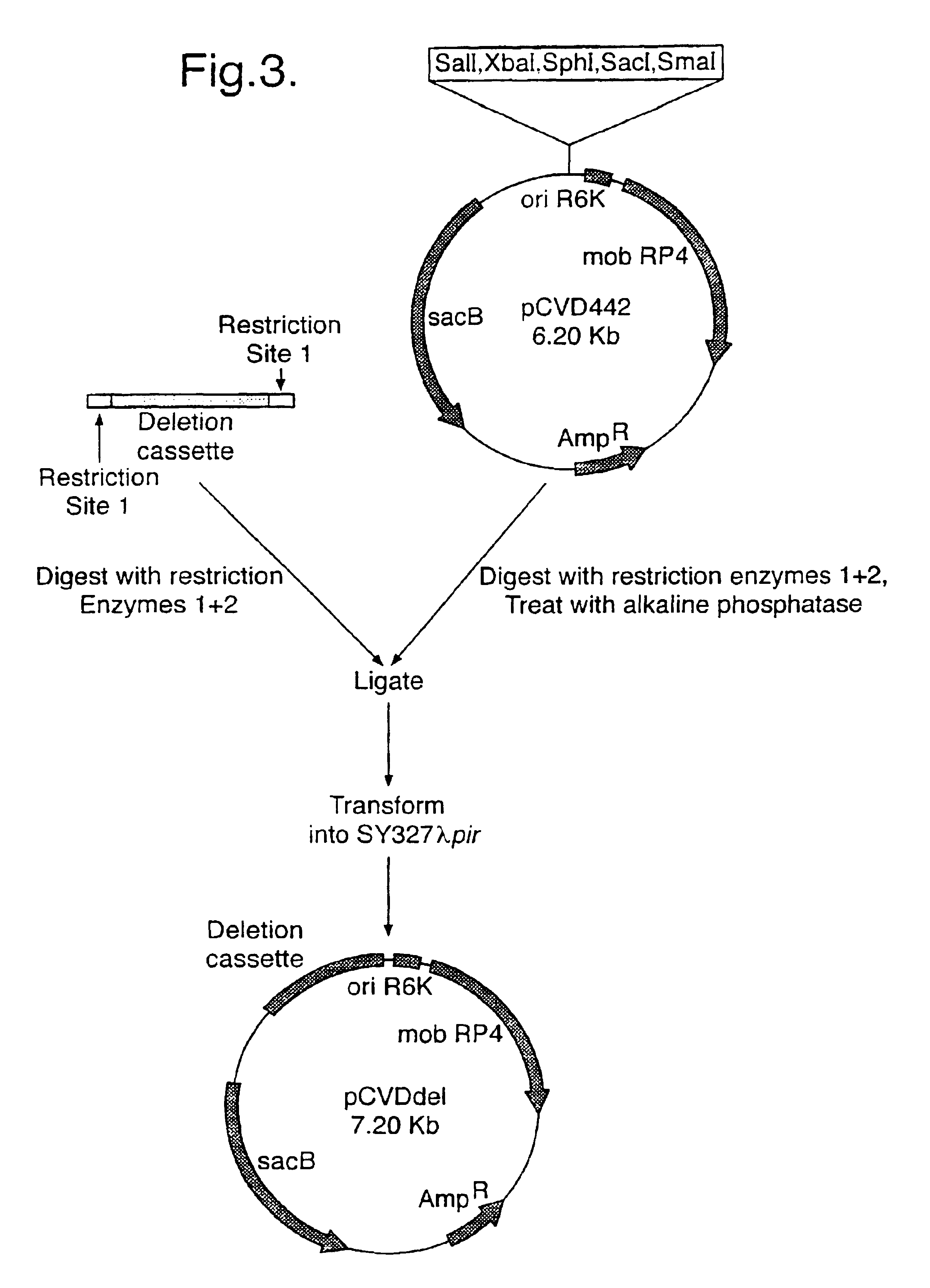Bacteria attenuated by a non-reverting mutation in each of the aroC, ompF and ompC genes, useful as vaccines
a technology of ompc and aroc, which is applied in the field of bacteria attenuated by a non-reverting mutation in each of the aroc, ompf and ompc genes, useful as vaccines, can solve the problems of unclear mode of attenuation, strains are particularly difficult to characterise in terms of possible reversion, and achieve the effect of reducing immunogenicity
- Summary
- Abstract
- Description
- Claims
- Application Information
AI Technical Summary
Benefits of technology
Problems solved by technology
Method used
Image
Examples
example 1
CONSTRUCTION AND CHARACTERISATION OF STRAIN ACCORDING TO THE INVENTION
Design of deletions and construction of plasmids pCVDΔAroC, pCVDΔOmpC and pCVDΔOmpF
[0046]Deletions were designated to remove the entire open reading frame of the target gene. Using the E. coli genome sequence as a template, PCR primers were designed to amplify fragments of 500-600 base pairs flanking the target open reading frame (see Table 1 for primer sequences). Splicing by overlap extension using PCR was used to fuse the two flanking sequences, creating a PCR product with the entire gene deleted (FIG. 1). The wild-type sequences around the deletion site and the predicted sequences after deletion are depicted in FIG. 2.
[0047]For each gene two different restriction sites were introduced into the splice region (see Table 2 below). These were used for identification of deletion clones. The PCR primers at either end of the PCR fragment introduced unique restriction sites that were used to clone the fragment into th...
example 2
Safety and Immunogenicity of Attenuated Vaccine Strain of Enterotoxigenic E. Coli (ΔaroC / ΔompC / ΔompF) in Human Volunteers
[0148]The study was designed to evaluate a candidate live attenuated vaccine strain of enterotoxigenic E. coli, namely the ΔaroC / ΔompC / ΔompF PTL003 described above.
Preparation of the vaccine seed lots
[0149]The bacterial strain was plated onto MacConkey agar for purity and for confirmation of identity, and 5 colonies used to inoculate a flask containing 200 ml of luria broth. After 8 hours incubation at +37° C., 30 ml of sterile glycerol was added to the broth culture and aliquots prepared (1 ml per vial). One hundred such vials were frozen at −70° C. These vials constituted the seed lot for the vaccine strain.
[0150]Purity of the seed lot was ensured by selecting ten random vials, and testing them for bacterial purity and freedom from fungi. An additional three vials were tested to determine the number of bacteria in the vials using standard plate count methods wit...
PUM
| Property | Measurement | Unit |
|---|---|---|
| Fraction | aaaaa | aaaaa |
| Density | aaaaa | aaaaa |
| Immunogenicity | aaaaa | aaaaa |
Abstract
Description
Claims
Application Information
 Login to View More
Login to View More - R&D
- Intellectual Property
- Life Sciences
- Materials
- Tech Scout
- Unparalleled Data Quality
- Higher Quality Content
- 60% Fewer Hallucinations
Browse by: Latest US Patents, China's latest patents, Technical Efficacy Thesaurus, Application Domain, Technology Topic, Popular Technical Reports.
© 2025 PatSnap. All rights reserved.Legal|Privacy policy|Modern Slavery Act Transparency Statement|Sitemap|About US| Contact US: help@patsnap.com



